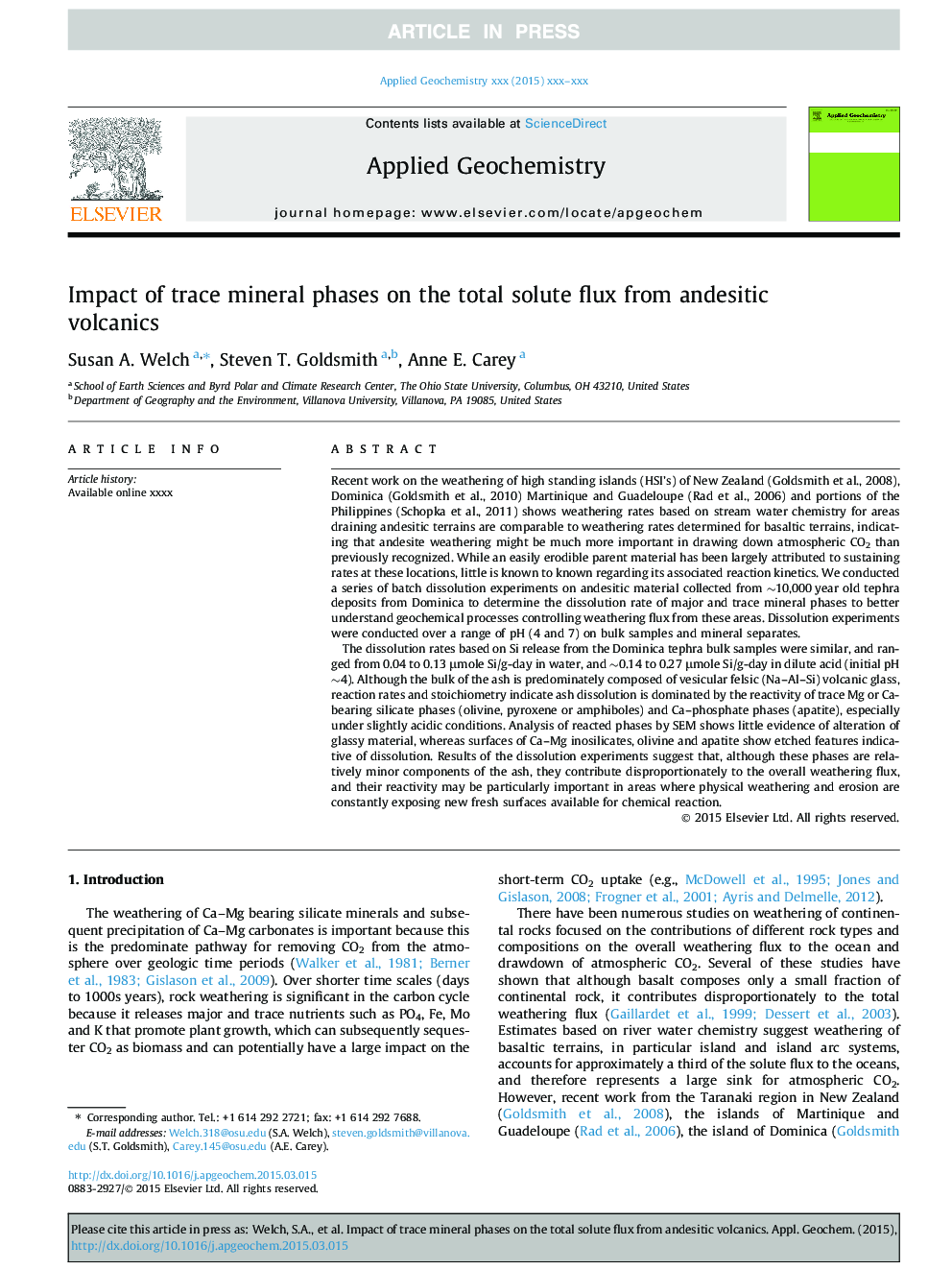| Article ID | Journal | Published Year | Pages | File Type |
|---|---|---|---|---|
| 6334886 | Applied Geochemistry | 2015 | 13 Pages |
Abstract
The dissolution rates based on Si release from the Dominica tephra bulk samples were similar, and ranged from 0.04 to 0.13 μmole Si/g-day in water, and â¼0.14 to 0.27 μmole Si/g-day in dilute acid (initial pH â¼4). Although the bulk of the ash is predominately composed of vesicular felsic (Na-Al-Si) volcanic glass, reaction rates and stoichiometry indicate ash dissolution is dominated by the reactivity of trace Mg or Ca-bearing silicate phases (olivine, pyroxene or amphiboles) and Ca-phosphate phases (apatite), especially under slightly acidic conditions. Analysis of reacted phases by SEM shows little evidence of alteration of glassy material, whereas surfaces of Ca-Mg inosilicates, olivine and apatite show etched features indicative of dissolution. Results of the dissolution experiments suggest that, although these phases are relatively minor components of the ash, they contribute disproportionately to the overall weathering flux, and their reactivity may be particularly important in areas where physical weathering and erosion are constantly exposing new fresh surfaces available for chemical reaction.
Keywords
Related Topics
Physical Sciences and Engineering
Earth and Planetary Sciences
Geochemistry and Petrology
Authors
Susan A. Welch, Steven T. Goldsmith, Anne E. Carey,
